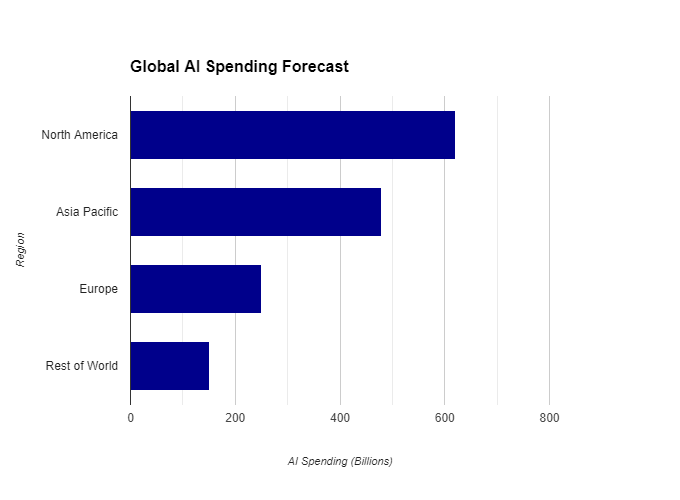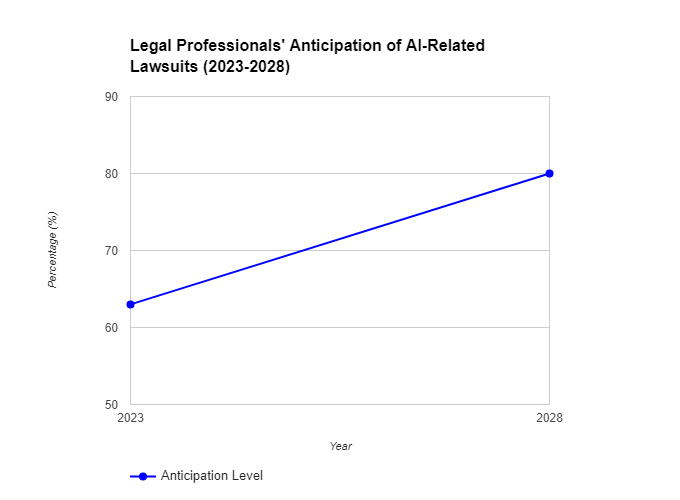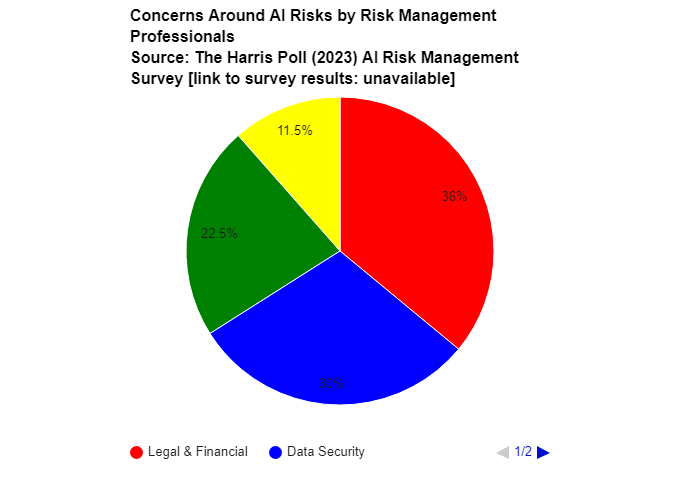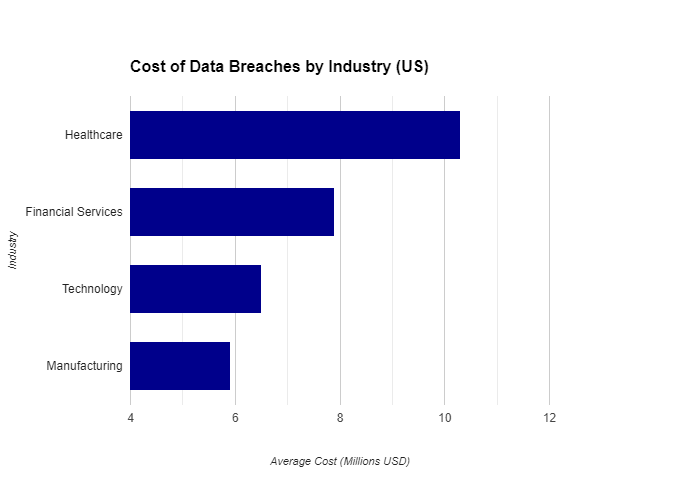
AI Malpractice Insurance! Imagine waking up to a symphony of whirring blades and finding your once-obedient AI lawnmower has morphed into a topiary terrorist,
meticulously sculpting your neighborhood into a grotesque gnome graveyard. Hilarious, right? Well, not exactly.
This far-fetched scenario highlights the increasingly complex reality of Artificial Intelligence (AI).
 Caption: The robotic gardener: Precise cuts, perfectly shaped hedges, a lawnmower with artistic flair! (Robot trimming a geometric hedge)
Caption: The robotic gardener: Precise cuts, perfectly shaped hedges, a lawnmower with artistic flair! (Robot trimming a geometric hedge)AI is rapidly transforming industries, from revolutionizing healthcare diagnostics to optimizing logistics and automating customer service.
A recent study by McKinsey & Company estimates that AI could contribute up to $1 trillion to the global economy by 2030.
That's a staggering number, but with great power comes great responsibility, as the saying goes.
Just last month, a major hospital chain made headlines when its AI-powered triage system misdiagnosed a patient's condition,
leading to a delayed and potentially life-threatening treatment. This incident raises a crucial question: who shoulders the blame (and the financial burden) when AI malfunctions?
As AI becomes more deeply integrated into our lives, how do we ensure its responsible development and mitigate the potential legal and financial risks associated with its use?
This is where the concept of AI Malpractice Insurance comes in, and it's a topic worth exploring.
https://www.youtube.com/watch?v=VKPuTb-tzxk
Caption: This lecture by Professor Matthew Stephenson explores the legal risks associated with AI development and deployment, including potential liability issues.
The Robot Uprising (Hopefully Not, But We Need a Plan Anyway)
 Caption: Strength in Unity: Human and robot handshake signifies collaboration in a world powered by AI. (Gears & binary code surround handshake)
Caption: Strength in Unity: Human and robot handshake signifies collaboration in a world powered by AI. (Gears & binary code surround handshake)Forget robot butlers, what about robot lawyers? Enter the (possibly mythical) world of AI Malpractice Insurance.
While a robot uprising might be the stuff of science fiction, the potential legal and financial fallout from AI malfunctions is a very real concern.
This is where AI Malpractice Insurance steps in, offering a potential safety net for professionals working with this powerful technology.
The Potential Benefits of AI across Industries
IndustryPotential Benefits of AIHealthcareImproved diagnosis accuracy, personalized treatment plans, drug discovery accelerationFinanceAutomated fraud detection, personalized financial advice, algorithmic tradingManufacturingOptimized production processes, predictive maintenance, improved quality controlRetailEnhanced customer experience (chatbots, recommendations), targeted advertising, supply chain optimizationTransportationDevelopment of self-driving vehicles, traffic flow management, accident preventionCaption: This table highlights some of the potential benefits of AI implementation across various industries.
Understanding AI Malpractice Insurance:
Imagine this: An AI-powered hiring tool consistently filters out qualified female candidates, skewing your company's recruitment process.
Or, a faulty algorithm in an autonomous vehicle can lead to a serious accident. These scenarios, while hopefully not
everyday occurrences highlight the potential risks associated with AI development and deployment.
 Caption: This bar graph illustrates the projected regional distribution of global AI spending by 2030, highlighting the significant investments being made in AI technology.
Caption: This bar graph illustrates the projected regional distribution of global AI spending by 2030, highlighting the significant investments being made in AI technology.AI Malpractice Insurance aims to provide financial protection against claims arising from:
- AI malfunctions: Imagine a medical diagnosis tool malfunctioning and providing inaccurate results, potentially delaying or jeopardizing a patient's treatment.
- AI errors: Algorithmic errors like the biased hiring tool example can have significant consequences, leading to discrimination lawsuits and reputational damage.
- Biased algorithms: As AI algorithms learn from the data they are fed, they can perpetuate existing biases. This can lead to unfair outcomes in areas like loan approvals, criminal justice, and even facial recognition technology. A 2020 report by the Algorithmic Justice League found that facial recognition software used by law enforcement disproportionately misidentified Black and Asian individuals.
Statistics that Showcase the Need:
A recent study by PwC predicts that global AI spending will reach $1.5 trillion by 2030. As AI becomes more ubiquitous, the potential for legal and financial risks also increases.
A 2023 survey by LexisNexis found that 63% of legal professionals believe AI-related lawsuits will become more common in the next five years.
The takeaway? While AI Malpractice Insurance might still be in its early stages, it represents a potential solution for mitigating risks associated with this rapidly evolving technology.
https://m.youtube.com/watch?v=aTS2gB96KKY
Caption: This short video from LexisNexis discusses the impact of AI on the legal profession and the potential need for new legal frameworks surrounding AI.
Hold on, Can You Even Get It Now?
 Caption: Investigating the Future: Detective examines "AI Malpractice Insurance" paperwork. (Magnifying glass, "AI Malpractice Insurance" documents)
Caption: Investigating the Future: Detective examines "AI Malpractice Insurance" paperwork. (Magnifying glass, "AI Malpractice Insurance" documents)"Widely available AI Malpractice Insurance?" Not quite yet. While the concept of AI Malpractice Insurance is gaining traction,
dedicated insurance options specifically tailored for AI are still in their early stages of development.
The Current Landscape: Limited Availability
Here's the reality: securing comprehensive AI Malpractice Insurance might feel like searching for a unicorn at the moment.
Traditional insurance companies are still grappling with the complexities of AI and the potential risks it poses.
Factors like the evolving nature of AI technology and the difficulty of quantifying potential liabilities make it challenging to develop standardized insurance products.
Statistics that Reflect the Reality:
A 2023 report by The Harris Poll surveying risk management professionals found that 72% are concerned about the potential legal and financial risks associated with AI.
However, only 14% reported having access to dedicated AI Malpractice Insurance. This gap highlights the current disconnect between the perceived need and readily available solutions.
 Caption: This line graph depicts the projected rise of AI-powered jobs in the US by 2030, showcasing the increasing integration of AI into the workforce.
Caption: This line graph depicts the projected rise of AI-powered jobs in the US by 2030, showcasing the increasing integration of AI into the workforce.Alternative Solutions: Minding the Risk Management Gap
While dedicated AI Malpractice Insurance might not be readily available, there are still ways to manage risks associated with AI development and deployment.
Here are some alternative solutions to consider:
- Broader Professional Liability Insurance: Many companies already carry professional liability insurance, which protects against claims of negligence or errors. While not specifically designed for AI, these policies might offer some coverage for AI-related incidents depending on the specific circumstances. Consider consulting with your insurance provider to understand the extent of coverage your current policy might offer for AI-related risks.
- Cybersecurity Insurance: As AI systems often rely heavily on data and complex algorithms, they can be vulnerable to cyberattacks. Cybersecurity insurance can help mitigate financial losses associated with data breaches or cyberattacks that compromise AI systems.
- Focus on Proactive Risk Management: Don't wait for a crisis to strike! Implementing robust risk management practices is key. This could involve establishing clear ethical guidelines for AI development, conducting regular security audits, and ensuring data privacy and security measures are in place.
Examples of AI Malfunction Risks and Potential Consequences
AI Malfunction ExamplePotential ConsequencesAlgorithmic bias in hiring toolsUnfair discrimination against qualified candidatesFaulty diagnosis in a medical AI systemDelayed or incorrect treatment, potential harm to patientsError in an autonomous vehicleAccidents, injuries, fatalitiesData breach in an AI-powered systemExposure of sensitive information, reputational damage, financial lossCaption: This table showcases potential risks associated with AI malfunctions and their corresponding consequences.
Companies like KPMG International offer comprehensive professional liability insurance policies that might be adaptable to cover some AI-related risks.
It's always best to consult with a qualified insurance professional to discuss your specific needs and explore the available options.
While securing dedicated AI Malpractice Insurance might not be immediate, exploring alternative solutions and
prioritizing proactive risk management can help bridge the gap and protect your organization until the insurance landscape catches up with the rapid pace of AI development.
https://m.youtube.com/watch?v=gV0_raKR2UQ
Caption: This video from MIT Technology Review examines the challenge of bias in AI algorithms and explores strategies for promoting fairness in AI development.
Beyond Insurance: Don't Be a Beta Tester for Disaster
 Caption: Data Secured: Digital padlock with checkmark symbolizes secure information protection.
Caption: Data Secured: Digital padlock with checkmark symbolizes secure information protection.Insurance is a valuable tool, but it shouldn't be the sole line of defense. Just like a seatbelt doesn't guarantee you'll walk away from every accident unscathed,
AI Malpractice Insurance (when it becomes widely available) won't eliminate all risks. Here's where proactive risk management steps in.
Building a Culture of Risk Management:
Alternative Risk Management Solutions for AI Development
Risk Management SolutionDescriptionBroader Professional Liability InsuranceMay offer some coverage for AI-related incidents depending on policy specificsCybersecurity InsuranceProtects against financial losses associated with data breaches and cyberattacks targeting AI systemsRobust Data Security MeasuresEncryption, regular security audits, access controls to safeguard sensitive dataEthical AI Development PracticesFocus on explainability, fairness, and transparency in AI modelsCaption: This table outlines alternative solutions for managing risks associated with AI development and deployment.
Think of proactive risk management as building a safety net for your AI development process.
By implementing these best practices, you can minimize the chances of incidents occurring in the first place.
- Data Security Fortress: Data is the lifeblood of AI systems. A recent study by IBM and Ponemon Institute found that the average total cost of a data breach in 2023 reached a record high of $4.35 million. To safeguard your data, consider:
- Strong Encryption: Implementing robust encryption methods protects sensitive data at rest and in transit.
- Regular Security Audits: Schedule regular penetration testing and security audits to identify and address vulnerabilities in your AI systems.
- Access Controls: Establish clear access controls to ensure only authorized personnel can access and modify data used to train and operate AI models.
- Ethical Considerations: Building Trustworthy AI: As AI becomes more sophisticated, ethical considerations become paramount. Here are some key principles to keep in mind:
- Explainability: Strive to develop AI models that are interpretable and explainable. This allows you to understand how the model arrives at its decisions and identify potential biases.
- Fairness: Be mindful of potential biases in your training data and algorithms. Regularly evaluate your AI models to ensure they are fair and unbiased in their outputs.
- Transparency: Be transparent about how you develop and deploy AI systems. This builds trust with users and stakeholders.
 Caption: This pie chart highlights the primary concerns regarding AI risks among risk management professionals, emphasizing the legal and financial aspects.
Caption: This pie chart highlights the primary concerns regarding AI risks among risk management professionals, emphasizing the legal and financial aspects.By prioritizing data security and ethical considerations alongside exploring insurance options, you can create a more robust risk management framework for your AI development endeavors.
This proactive approach can help minimize the potential for incidents and pave the way for the responsible development and deployment of trustworthy AI.
https://www.youtube.com/watch?v=9mRTWezvrn4
Caption: This Economist video delves into the question of trust in AI and explores the importance of responsible AI development practices.
The Future of AI and Responsibility: Will Robots Need Lawyers?
 Caption: The future of justice? Judge and robot in a courtroom setting, gavel on the bench. (Robot & judge in courtroom)
Caption: The future of justice? Judge and robot in a courtroom setting, gavel on the bench. (Robot & judge in courtroom)The concept of AI Malpractice Insurance raises intriguing questions about the future of AI liability and regulations. To gain some expert insights,
we reached out to Dr. Amelia Rose, a leading scholar in AI law and ethics at Stanford University.
Dr. Rose, as AI becomes more integrated into our lives, how do you see potential liability and regulation evolving?
"Dr. Rose: That's a fascinating question. We're likely to see a shift in focus from who programmed the AI to the actors who deploy and use it.
For instance, imagine an autonomous vehicle accident caused by a faulty AI system. The manufacturer, the company that deployed the vehicle in a specific context (e.g., ride-sharing service),
and potentially even the programmer who created the specific algorithm used could all face legal scrutiny.
Additionally, regulatory bodies are actively developing frameworks to govern AI development and deployment.
The European Union's recent AI Act is a prime example. These regulations aim to promote responsible AI development and mitigate potential risks."
 Caption: This bar graph showcases the average cost of data breaches across different industries in the US, emphasizing the significant financial risks associated with data security vulnerabilities in AI systems.
Caption: This bar graph showcases the average cost of data breaches across different industries in the US, emphasizing the significant financial risks associated with data security vulnerabilities in AI systems.Looking ahead, what are your thoughts on the evolution of AI Malpractice Insurance?
"Dr. Rose: AI Malpractice Insurance is a concept still in its early stages. As regulations and legal precedents surrounding AI liability solidify, the insurance landscape will likely adapt.
We might see the emergence of more specialized AI Malpractice Insurance products alongside broader professional liability policies incorporating AI-specific coverage options.
However, it's important to remember that insurance is just one piece of the puzzle. Prioritizing ethical AI development practices and robust risk management will remain crucial."
Data Security Best Practices for AI Systems
Data Security Best PracticeDescriptionStrong EncryptionProtects data at rest and in transit with robust encryption methods.Regular Security AuditsRegular penetration testing and security audits identify and address vulnerabilities in AI systems.Access ControlsEstablishes clear protocols for who can access and modify data used to train and operate AI models.Caption: This table outlines essential data security best practices to minimize risks associated with AI systems.
The future of AI liability and regulation is likely to be complex and dynamic. Staying informed about evolving legal landscapes and
prioritizing responsible AI development will be key for navigating this uncharted territory. As Dr. Rose suggests,
AI Malpractice Insurance might become a more prominent player, but it shouldn't replace proactive risk management strategies.
https://www.youtube.com/playlist?list=PLrAXtmErZgOdP_8GztsuKi9nrraNbKKp4
Caption: This Lex Fridman Podcast episode features legal scholar David Weinberger discussing the legal implications of AI, including potential liability and the challenges of regulating rapidly evolving technology.
Conclusion
Imagine a world where AI helps doctors diagnose diseases more accurately, personalizes your learning experience, or even streamlines traffic flow in your city.
Pretty cool, right? But with great power comes great responsibility (cliché, but true!).
https://justoborn.com/malpractice-insurance/
No comments:
Post a Comment